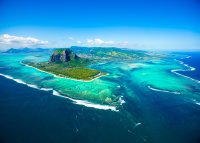When Gerald Durrell founded Jersey Zoo in 1959, he chose the dodo as the trust’s symbol, vowing that its tragic story would never be repeated. He also had the conservation of species in the wild as his main goal, a concept that we now accept as normal, but something that was a radical departure for a zoo 50 years ago. Since that time, Jersey Zoo has become the Durrell Wildlife Conservation Trust. Building on Gerald’s legacy, their mission is saving species from extinction. Conservation efforts are delivered through the three pillars of the Trust, the wildlife park in Jersey, the field programmes around the world and the training programmes that provide the conservationists of the future with the skills they need to save species.
When Gerald first visited Mauritius and Rodrigues in 1976, indigenous birds had been reduced to 13 species, including the world’s rarest pigeon, falcon and parrot all teetering on the brink of extinction. Off the Mauritian coast, Round Island was the bleak, barren home of eight species of reptiles, including the world’s two rarest snakes. Nearby Rodrigues had suffered drought and cyclones in addition to manmade indignities. The Rodrigues fruit bat was considered the world’s rarest bat, and only two endemic species of native land birds remained. Small conservation efforts were under way but the international zoological community largely regarded the Mascarenes as paradise lost – it seemed that the legacy of the dodo would continue. With the encouragement of the Mauritian Government and the support of the International Council for Bird Preservation (now Birdlife International), Durrell mounted an intense conservation campaign to save some of these species. This effort led to the establishment of the Mauritian Wildlife Foundation (MWF). Since that time MWF has become the leading non-government environmental organisation in Mauritius, championing the cause for biodiversity conservation and restoration in the islands. Durrell’s commitment to encouraging and supporting local expertise continues.
With species such as the Mauritius kestrel and pink pigeon on the very edge of extinction, not only were drastic steps needed but the team had to develop new techniques and skills to ensure the last remaining individuals did not disappear. With only four kestrels and nine pigeons left, a combined response involving captive breeding and extensive field work was needed to start turning numbers around. Now there are over 300 kestrels and pink pigeons in the wild. As a result of these joint achievements, the Mauritian Government have set up a national park in the last remaining natural forest, Black River Gorges. Similar successes were achieved for the echo parakeet which went from around 12 individuals to now more than 500 and the Rodrigues fruit bat which now numbers over 10,000 individuals. The skills developed with these species have been applied to conservation projects around the world and hundreds of students and researchers have studied the recovery of these populations, contributing greatly to our knowledge of threatened species recovery.
Developing from the restoration of these species was the concept of rebuilding Mauritius’s highly threatened ecosystems, starting with some of the offshore islands and one in particular, Round Island. Round Island was used by sailors as a dumping ground for goats and rabbits and soon these animals grazed out the native vegetation, sending the native flora and fauna almost to extinction. After a major programme of eradication for the goats and rabbits it was possible to start working on the restoration of the plants and animals. Almost immediately the island’s flora started to recover. Intensive work started on the endemic reptiles and together with management on the other offshore islands populations of Telfair’s skink, Guenther’s gecko and the Round Island boa have been shown to recover. Recently non-native tortoises have been introduced to the island to replicate the grazing functions carried out by now extinct native species and studies have shown how native plant species benefit from this, while introduced plants do not.
We have now extended this model to work on a number of the smaller islands off Mauritius. We are currently restoring the native reptiles to these islands and working with the National Parks and Conservation Service, a government agency, to restore vegetation and remove invasive species.
The world-renowned Durrell Wildlife Conservation Trust has enjoyed spectacular success with its Mascarene-related projects.
Donations may be made to the Mauritius Programme of Durrell Wildlife Conservation Trust, which works with the MWF, by sending a cheque in any currency to Durrell Wildlife Conservation Trust (Les Augrès Manor, La Profonde Rue, Trinity, Jersey JE3 5BP, Channel Islands; % 01534 860000; f 01534 860001; e info[at]durrell.org; durrell.org). To find out more about the Durrell’s fascinating work or to become a member, contact them at the same address or via their website.














